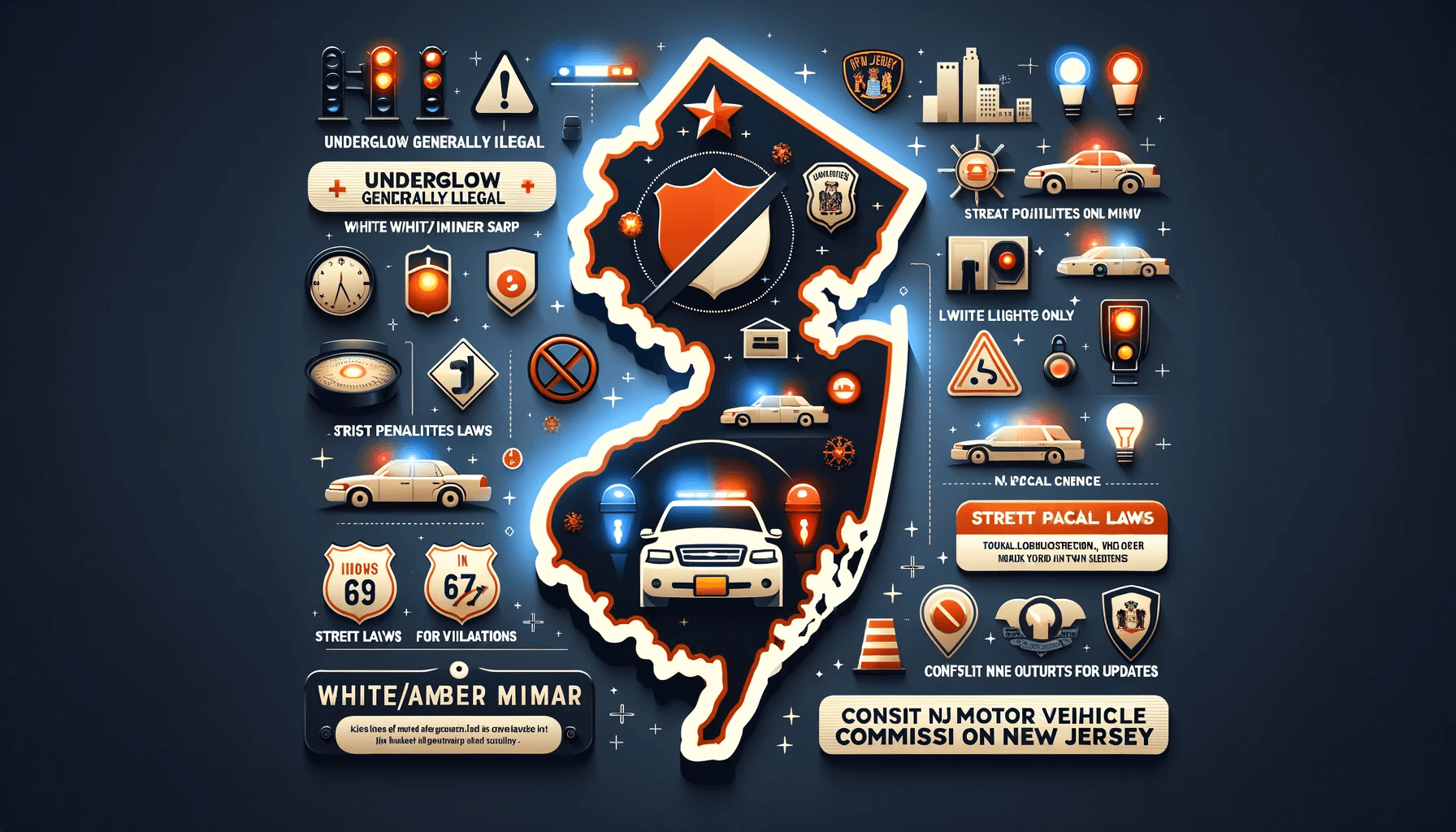Hello, automotive enthusiasts and legal navigators! Today, we’re illuminating a topic that combines the flare of car customization with the nuances of U.S. law: Are underglow lights illegal in the United States? This question revs up discussions in car forums and legal circles alike, blending aesthetics, safety considerations, and state-specific regulations into a fascinating legal mosaic. So, let’s dive into the colorful world of underglow lighting and explore its legal landscape.
Understanding Underglow Lights
Underglow lights, also known as neon undercar lights or ground effects lighting, refer to aftermarket customizations that add neon or LED lights beneath a vehicle, casting a luminous glow onto the road surface. Popular among car enthusiasts for their striking visual effect, these modifications also raise questions about legality and road safety.
The Patchwork of State Regulations
The legality of underglow lights in the U.S. is not governed by a uniform federal law but rather by a patchwork of state regulations. Each state has its own set of rules that determine whether these lighting modifications are permissible, restricted, or outright banned. Let’s break down the common themes:
- Color Restrictions: Many states prohibit certain colors for underglow lights, particularly red, blue, and sometimes green, as these colors are reserved for emergency vehicles and law enforcement. Using these colors can lead to confusion on the road and potentially result in legal consequences.
- Visibility and Distraction Concerns: States may restrict underglow lights that are deemed overly bright or distracting to other drivers. The goal is to ensure that aftermarket lighting does not compromise road safety by impairing visibility or distracting attention.
- Installation and Usage Limitations: Even in states where underglow lights are legal, there may be specific regulations regarding how and when they can be used. For example, some states allow underglow lighting only while the vehicle is parked, while others may permit their use on the road with restrictions on light intensity and direction.
States with Notable Restrictions or Specific Regulations on Underglow Lights:
- California: Has specific regulations on the color and placement of underglow lights, prohibiting red lights to the front and restrictions on lights that may be visible from the front.
- Texas: Allows underglow lights but prohibits red, blue, and green lights that can be confused with emergency and government vehicles.
- Florida: Permits underglow lights but restricts the use of blue and red colors due to their association with law enforcement and emergency vehicles.
- New York: Very restrictive on any aftermarket lighting, including underglow, particularly those that emit blue or red lights.
- Michigan: Has restrictions on the color and usage of underglow lighting, particularly prohibiting the use of red, blue, and green lights in ways that can be seen from other vehicles on the road.
- Illinois: Allows underglow lighting with restrictions on colors that can be confused with emergency vehicles.
- Pennsylvania: Prohibits underglow lights that emit blue and red colors, as well as any lighting that may distract other drivers or mimic emergency vehicles.
This list is not exhaustive and does not cover all specifics or all states. The laws can be complex, varying not just by state but sometimes by local jurisdiction within a state. The trend in restrictions often revolves around:
- Color: Blue and red are the most commonly restricted colors, with some states also limiting green or white under certain conditions.
- Visibility: Lights that are deemed too distracting or that can be seen from specific angles may be restricted.
- Operation: Some states allow underglow lights only when the vehicle is stationary.
Legal Considerations for Car Enthusiasts
If you’re considering adding underglow lights to your vehicle, here are some legal tips to keep your customization within the bounds of the law:
- Research Your State’s Regulations: Before investing in underglow lighting, check the specific laws in your state and local jurisdiction. State DMV websites and local law enforcement agencies can be valuable resources.
- Choose Colors Wisely: Opt for colors that are less likely to be confused with emergency vehicles. Non-restricted colors like white and amber are generally safer choices.
- Be Mindful of Brightness: Ensure that your underglow lights are not so bright as to impair the visibility of other drivers or to attract undue attention from law enforcement.
- Consider Professional Installation: A professional installer familiar with state laws can help ensure that your underglow lighting is both legal and safely installed.
Final Thoughts: Balancing Passion and Prudence
Underglow lights embody the spirit of automotive customization, allowing car enthusiasts to express their style and individuality. However, navigating the legalities of these modifications requires a balance between passion and prudence. By staying informed about state regulations and prioritizing road safety, drivers can enjoy the aesthetic benefits of underglow lighting without running afoul of the law.









Leave a Reply